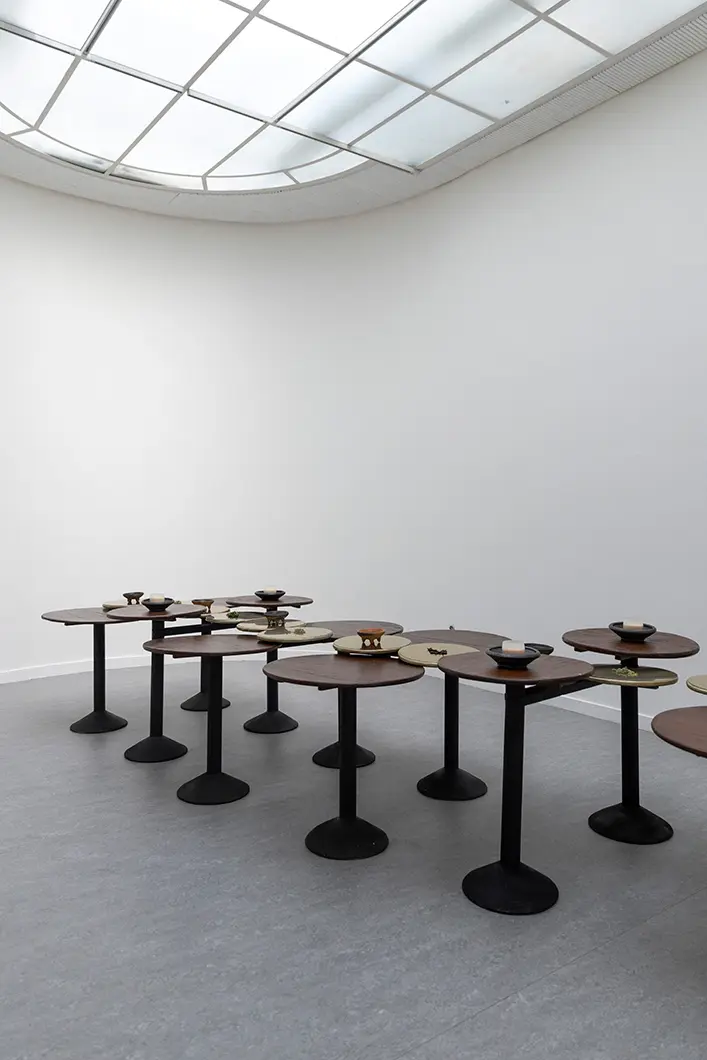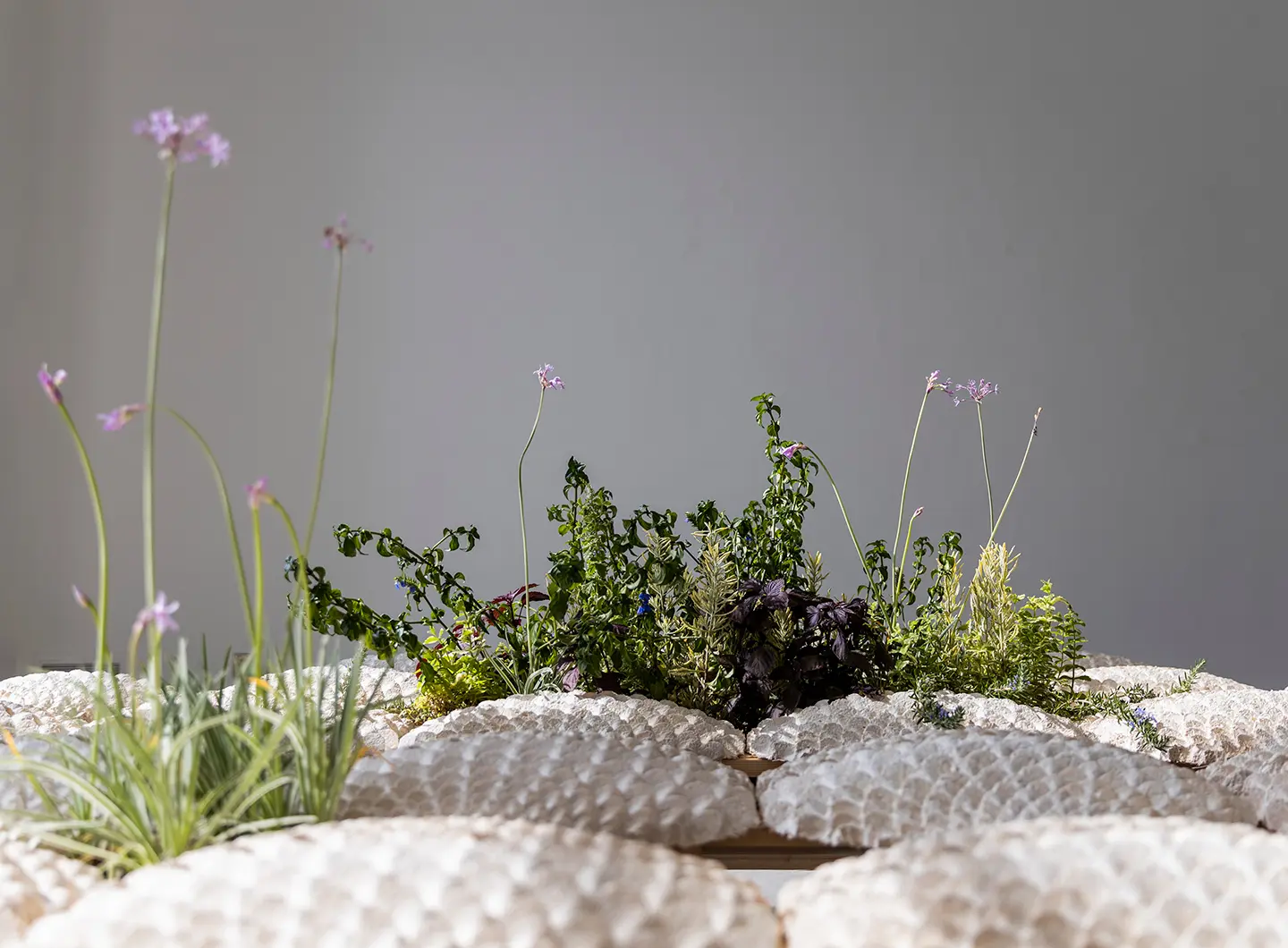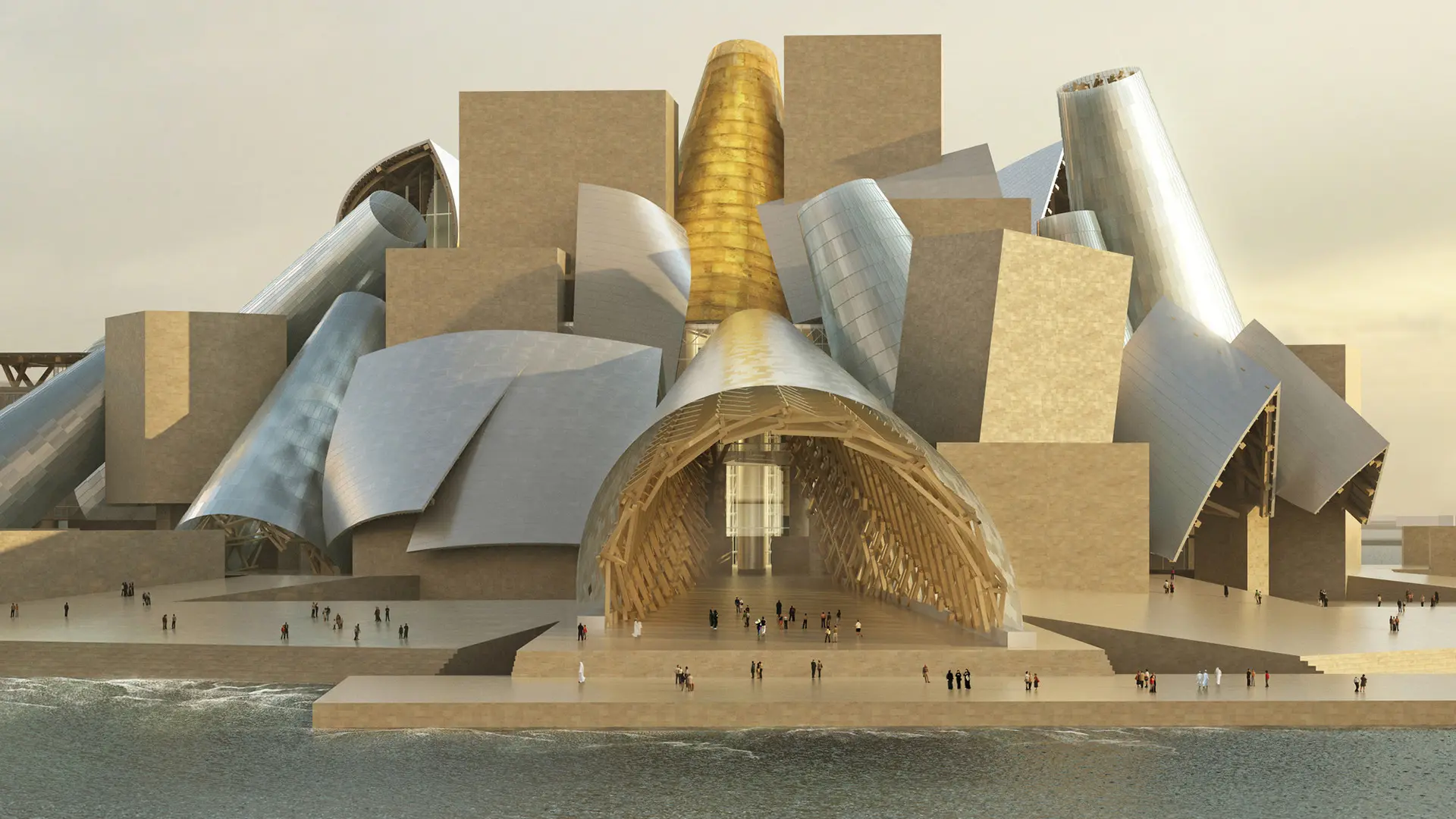From BIG to David Chipperfield, Frank Gehry to Snøhetta: a world tour of the best buildings set to open in 2026
Circular design as discussed with Mae-ling Lokko
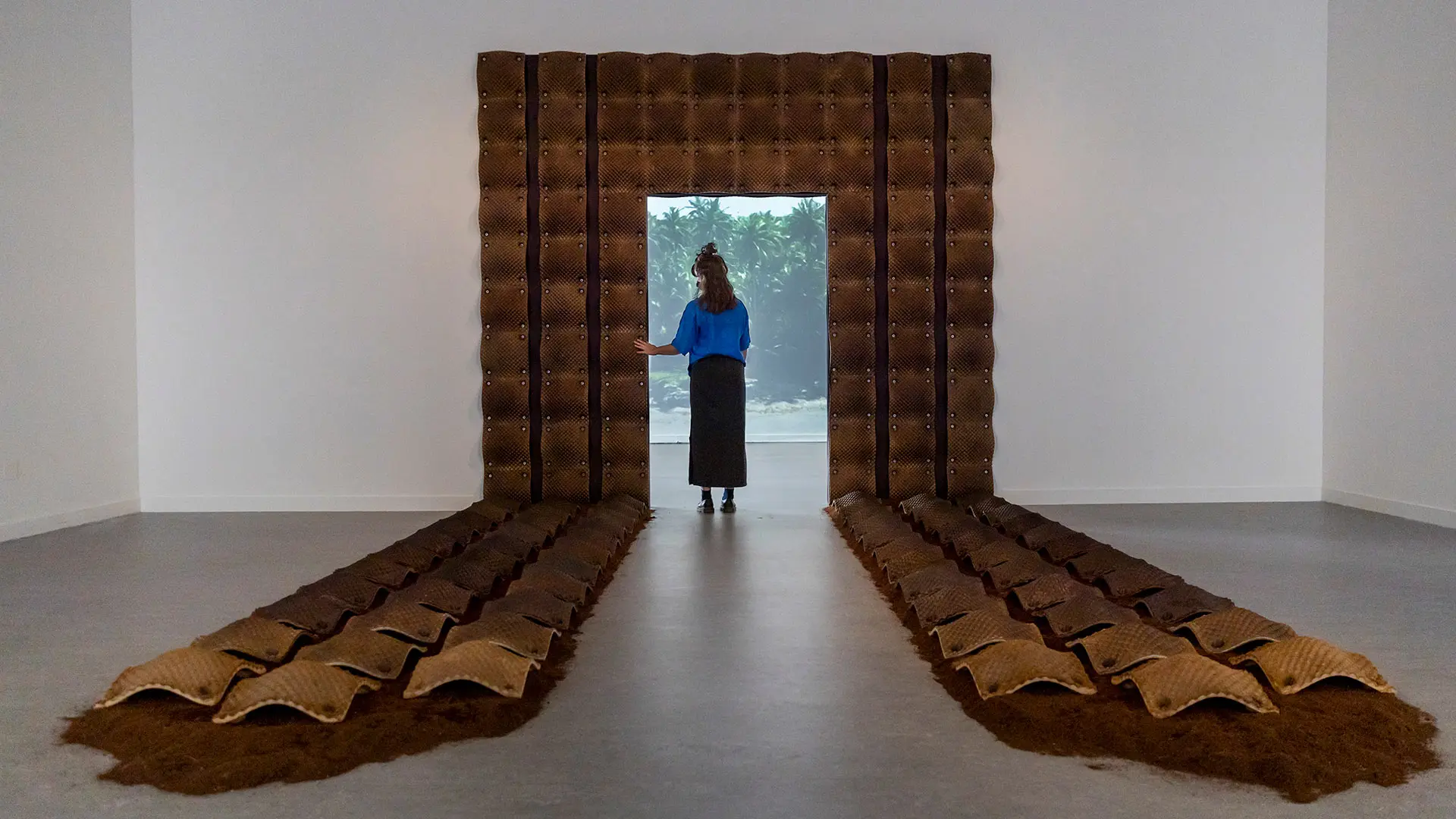
Treshold of Return, Z33, ph. © Selma Gurbuz
Designs for economic and ecological justice by the architectural scientist in her solo show Grounds for Return at the Z33 museum in Hasselhelt, Belgium
The architect, researcher and scientist Mae-ling Lokko’s work focuses on sustainable material and on upcycling food waste. The recent exhibition Grounds for Return, at the Z33 museum in Hasselt, in Belgium, consisted of a series of large installations that explore the different aspects of these processes: technological, formal, cultural, economic and political. The Ghanaian Filipina “architectural scientist” talks about her unique approach through the works on show.

Healing Meadow, Z33, ph. © Selma Gurbuz
I studied at a New York research institute called the Center for Architecture, Science and Ecology, which takes a humanist view of chemistry, biology and ecology, especially where architecture is concerned. That’s where the definition comes from. It’s a discipline close to construction science, but with greater focus on the formal and aesthetic aspects of the systems or technologies on which one is working.
In general, when I’m working I always start from a material or technological hypothesis and from its possible applications: humidity control, water filtering, mechanical resistance. Many other projects involving biomaterials tend to explore the architectural side, but this comes second for me, and is developed following the technical hypothesis.
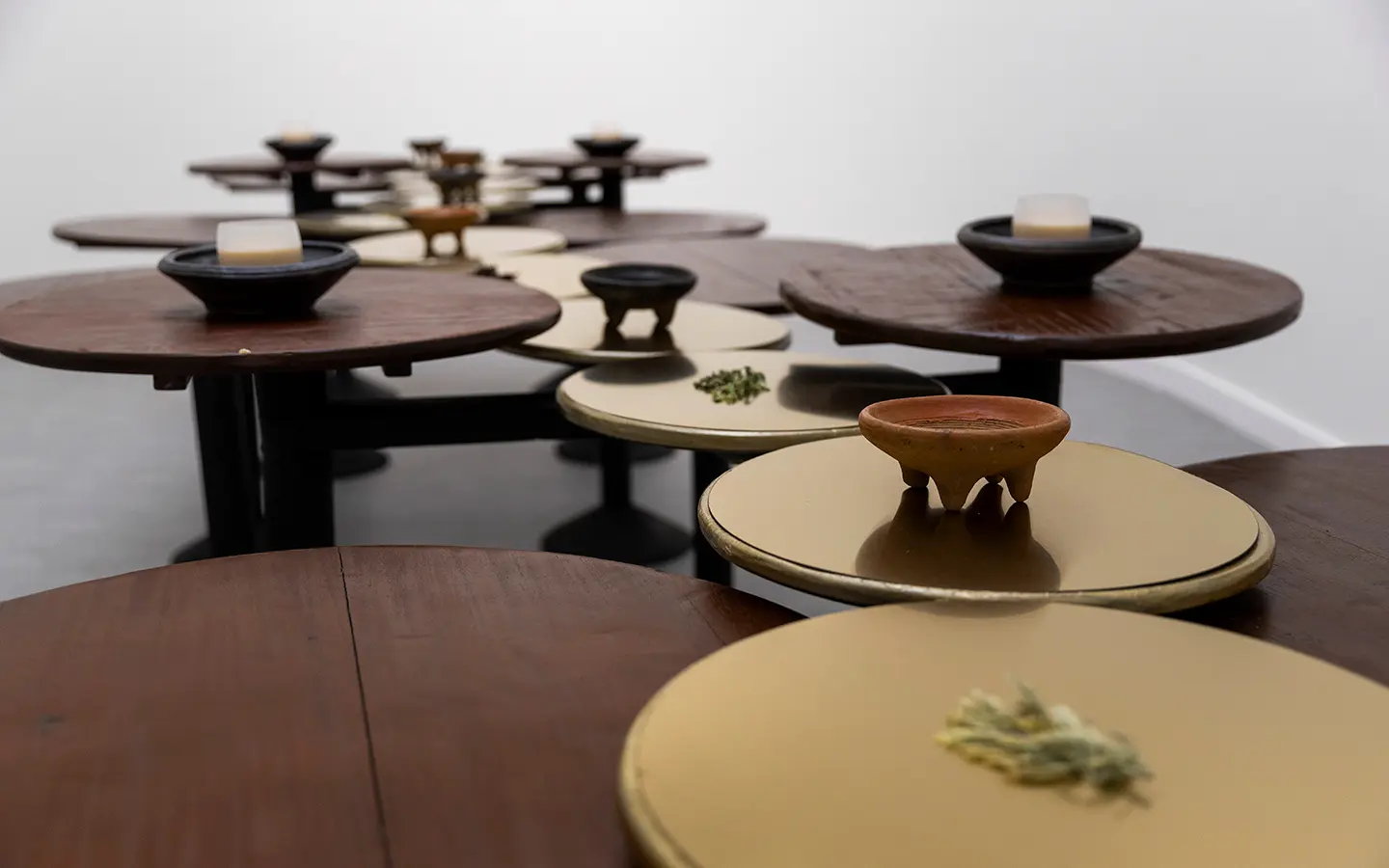
Mae-ling Lokko and Selassie Atadika, Elemental Table, Z33, ph. © Selma Gurbuz
The exhibition gave me time to re-examine all the work I’ve done: the texts, even the unpublished ones, and what might appear to be the tangential aspects of the projects. We highlighted the political, economic and social consequences of some of the material processes. When you’re working in such a technical field, it’s hard to describe the backdrop to what you’re doing, but we’ve tried to create a narrative tying the history of colonialism in Africa in with the emerging biotechnologies.
This approach may be driven by the fact that I come from the global South, where the social, cultural and economic hinterland is a fundamental bar to many projects, yet it’s also a challenge. People who work with agricultural or plastic waste here in Africa are outsiders, compared with an entrenched material economy that still bears a colonial imprint. That’s another reason why it’s crucial to establish solid, trustworthy and long-lasting frameworks and collaborations.
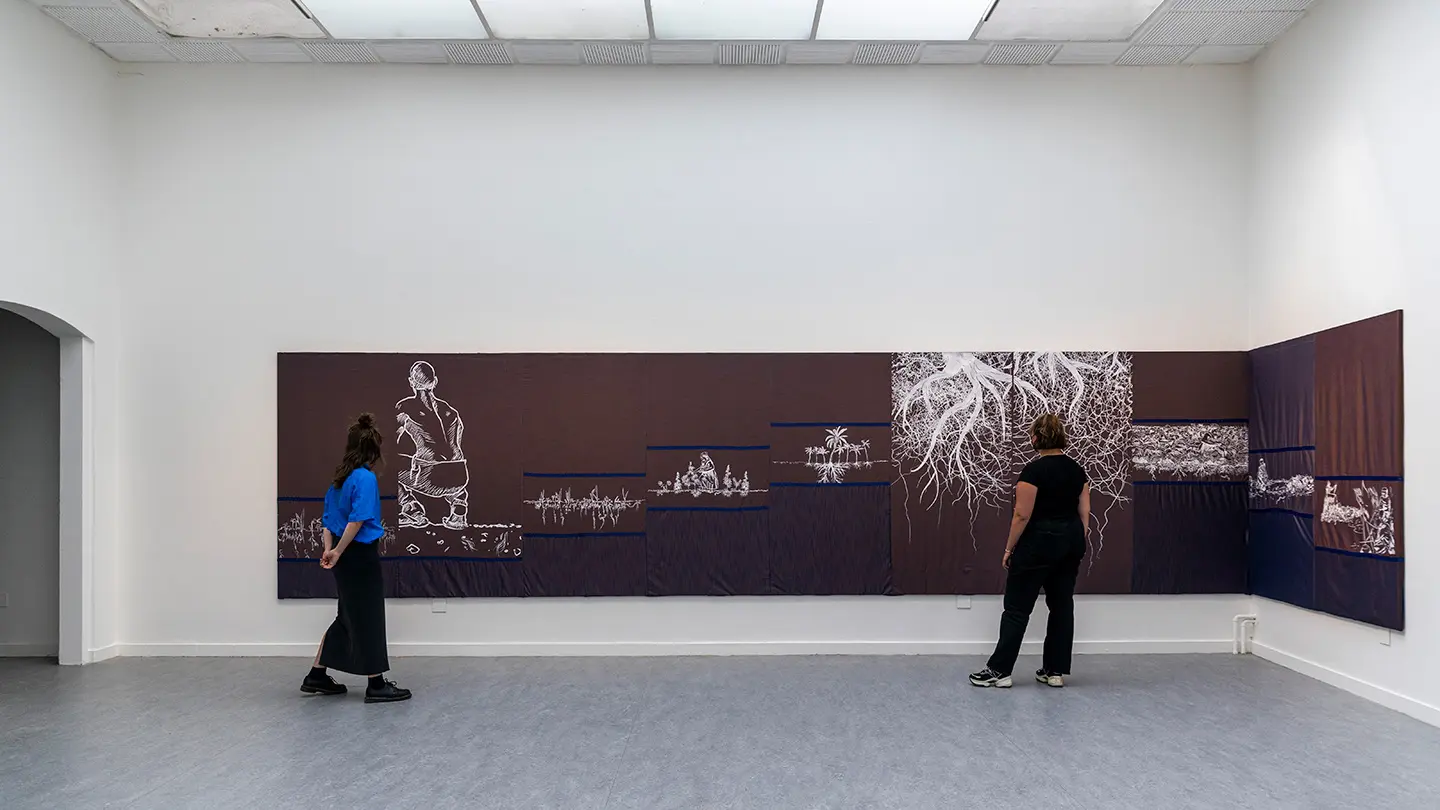
Mae-ling Lokko and Nana Afua Pierre Haynes, Generative Grounds, Z33, ph. © Selma Gurbuz
This was my first project on biomaterials and it uses the waste from coconut paste, building a connection between architecture and the centuries-old colonial economy in Ghana – exports of low-cost goods from the continent, which makes it impossible to create and distribute value around the country. The problem of large-scale waste was the issue that triggered the development of the product and restoring value to the waste products – in this case the shells – also means giving back to the people who work in this sector and to the earth. The waste is shown at Z33 both turned into insulating panels and disintegrating in the soil. Coconut shells can be used for hydroponic crops when the soil is just too depleted. The installation also references the country’s agricultural and colonial history. The “doors of no return” on the Ghanaian coast were the places through which the slaves were forced onto ships headed for the United States. With this installation, I am attempting to develop the technical, cultural and historic aspects of the concept of “return.”
I created two installations out of mycelium, which is the vegetative part of the fungus and acts as a sophisticated natural glue, transporting, breaking down and nourishing various parts of the ecosystem. Mycelium best represents my concept of return. In the materials I cultivate, some of the agricultural or food waste is given as a paste to the mycelia. They use it for food, taking in cellulose, water and other nutrients from the substrate mixture that enables them to become an isolating material. The two installations represent two extraction spaces – the forest, subject to anthropic violence, and a mine tunnel.
The exhibition ends with food and an installation created together with the chef Selassie Atadika, with whom I collaborated in Accra, during my first residency with the artist El Anatsui. The table is a homage to the trays used by Ghanaian women to carry goods from the farms to the cities. They’re made of very cheap wood called ‘wawa,’ and are seen as objects of little aesthetic value by the Ghanaians, and are never shown off or used during meals. The installation is made up of three different-sized tabletops that can be used for eating, sharing meals or passing ingredients across, evidencing the community aspects of food. The project will end with some suppers for twelve people, to which we will invite the different food chain actors: farmers, distributors and consumers.

A Matter of Salone: the new Salone communication campaign
From a reflection on humans to matter as meaning: the new Salone communication campaign explores the physical and symbolic origins of design, a visual narration made up of different perspectives, united by a common idea of transformation and genesis


Salone 2025 Report: The Numbers of a Global Event
Data, analyses, and economic, urban, and cultural impacts. The second edition of Salone del Mobile’s “Milan Design (Eco) System” Annual Report takes stock of a unique event and consolidates the fair’s role as the driving force behind Milan as the international capital of design



 Sustainability
Sustainability




